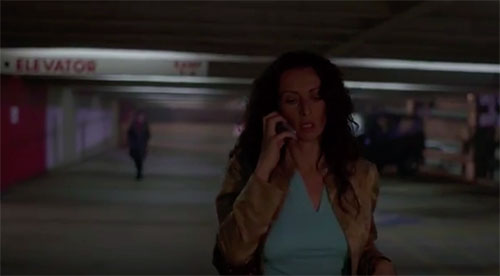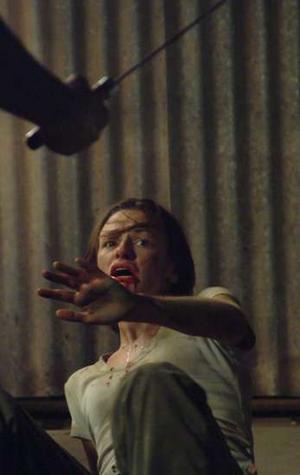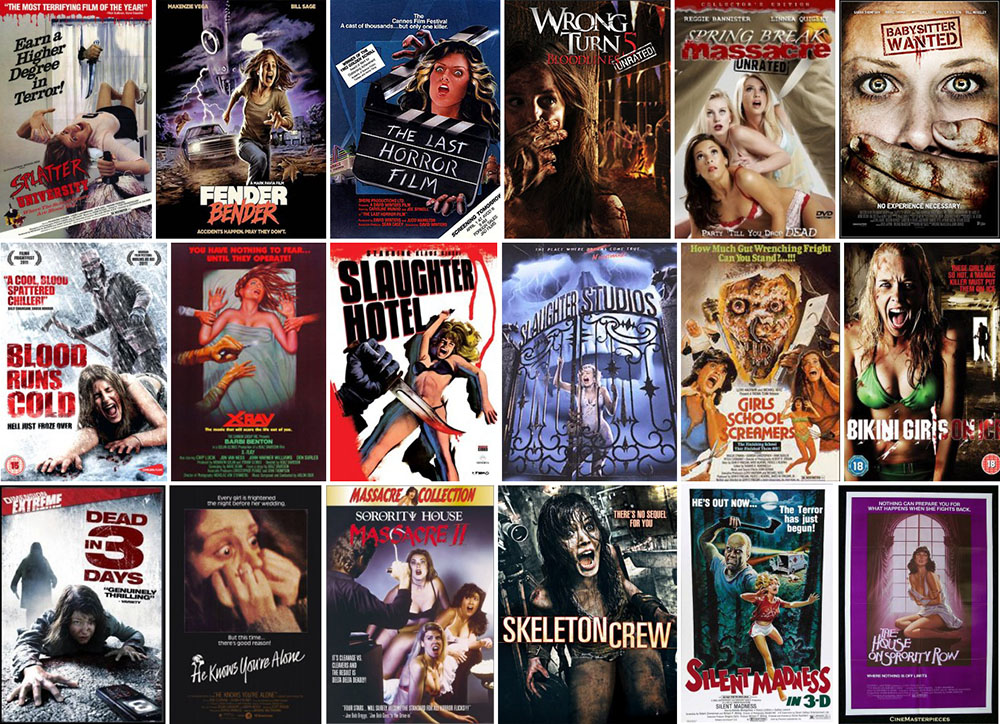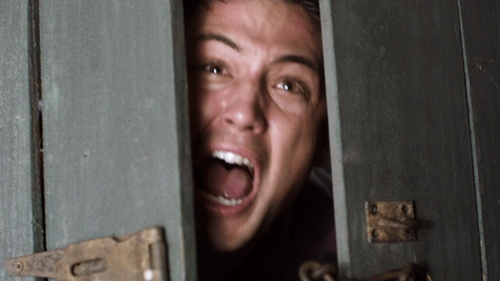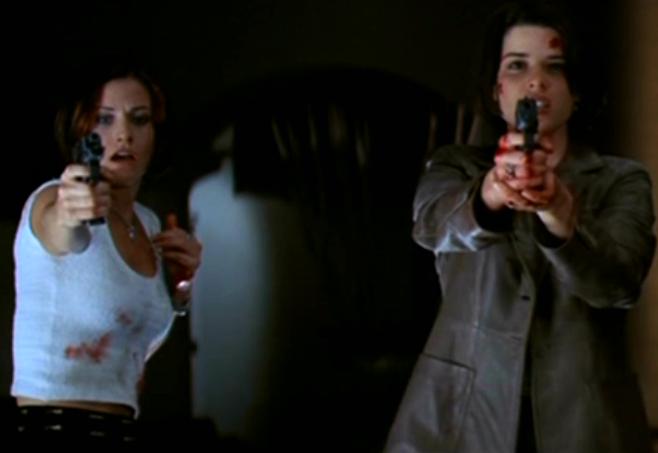For a long time I didn’t really consider The Stepfather movies to be slasher flicks: Slightly too-highbrow (the first one, at least) and more in common with the rush of late-80s demented family member/one night stand/roommate/nanny thrillers.
However, the titular character does kill his way through the three movies, laying to waste those who disrupt his vision of familial bliss. That the films are less about a string of victims and more focused on the facade created by the stepfather is relevant, but they’re cool films so let’s love them anyway…
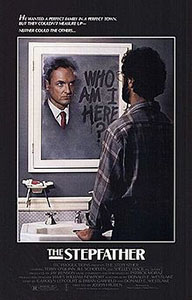 THE STEPFATHER
THE STEPFATHER
 1987/18/85m
1987/18/85m
“Jerry Blake loves taking care of the family. Any family.”
Director: Joseph Ruben / Writers: Carolyn Lefcourt, Brian Garfield & Donald E. Westlake / Cast: Terry O’Quinn, Jill Schoelen, Shelley Hack, Stephen Shellen, Charles Lanyer, Stephen E. Miller.
Body Count: 4
Laughter Lines: (to the grieving sibling of a murder victim) “Why don’t you get on with the rest of your life and forget about it?”
As the product of a family where the parents have stayed together for over 40 years, I don’t have much insight into what it’s like to grow up with a single parent and have a prospective new partner enter the scene, disrupting the routine that you likely cling on to in the wake of a divorce or loss.
I can only imagine what it must be like to have someone try to be your new best friend, especially if they glow with a plastic Ward Cleaver aura, one that feels so forced that, in the wake of films like this, you’d automatically suspect them of having some literal skeletons in their closet.
For Stephanie Maine (then-burgeoning scream queen Jill Schoelen), this is a nightmare come true as, after her father’s death, her mother has remarried Jerry Blake – smilin’ family guy, realtor, doting dad, unhinged psychopath. Beyond the expected issues of coping with her loss, Stephanie gets expelled from school and blames all of her problems on Jerry and his transparent attempts to reach her: The usual ‘champ’, ‘slugger’ platitudes, buying her a puppy etc…

Of course, we know better having seen ‘Jerry’ dramatically alter his appearance and walk out on his slain previous family in the prologue, slipping effortlessly into a new life.
At a party hosted by the family, Stephanie gets a glimpse of Jerry’s hidden persona as he throws an anger hissy in the basement where he thinks he’s out of sight. Overhearing the tale of the still uncaptured family-slayer, Stephanie begins to believe Jerry is that guy.
Like the thrillers that came in its wake, a large midsection of The Stepfather concerns Jerry thwarting Stephanie’s attempts to out him, while mother Susan looks on, thinking all is rosy. He also finds time to murder Steph’s shrink and mocking up an accident, the event that eventually brings them closer, that is until he flips about her kissing her crush on the doorstep.
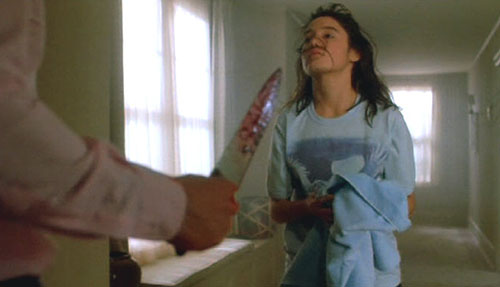
Jerry finally decides enough is enough and begins sculpting a new life in preparation for getting shot of Susan and Stephanie and starting anew elsewhere, but unfortunately for him, not only does he confuse his identities, but the brother of his last wife has been busy tracking him down and is about to show up with a gun in hand. Things shunt into slasher gear when Stephanie is attacked and has to save herself.
O’Quinn’s commitment to what could easily have been a campy, over-hammed role as Dad is what carries both this and the sequel beyond the contrivances of the plot (more pertinent in the follow-up). His natural intensity, later seen in Lost, and a talent for balancing his below-the-surface psychotic tendencies with the outward guy-next-door charm is genuinely unsettling – the way he posits “maybe they disappointed him?” as a possible motive for the murders is chilling – and a series of glares serves to remind the viewer that we know a lot more than his family and friends.

The many stares of the Stepfather
For her part, Schoelen oozes likeability – as she did in all her horror roles – and rises to the challenge of final girl-dom with aplomb, using broken mirror shards and sledges to her advantage. The only weird thing about it is that, despite being in her early twenties during production, her brief topless shower moment seems wrong as her character is said to be fifteen. It’s buoyed in a way by some frontal nudity of O’Quinn, courtesy of a reflection in a mirror, but still seems weird.
A fine film, albeit with a narrative that’s been aped too many times to reap its rightful returns, but it seems over a little too soon and, I think, could work well in mini-series format if they ever wanted to resurrect it. Oh wait, they did…
.

STEPFATHER II
 1989/18/88m
1989/18/88m
A.k.a. Stepfather 2: Make Room for Daddy
“Tonight – Daddy’s coming home to slice more than just the cake!”
Director: Jeff Burr / Writer: John Auerbach / Cast: Terry O’Quinn, Meg Foster, Caroline Williams, Jonathan Brandis, Henry Brown, Mitchell Laurance.
Body Count: 5
Having miraculously survived the wounds inflicted on him at the end of the first film, Jerry is now locked up in an institution in Puget Sound, where the new doctor, Dr Danvers, is keen to help him and find out his real identity – but we know Jerry will have other plans.
After winning the doc’s trust, he dispatches him and a security guard before making his escape and rocking up in a Los Angeles suburb ‘for the family’ where he sets himself up as Dr Gene Clifford, a therapist specialising in familial stuff.
Before long, Gene is involved with local divorcee Carol and her sad son Todd. While he disappears her ex husband forever into a compactor, Carol’s friend Matty (Williams) begins to suspect the good doctor is not all he seems, using her access as local mail handler to find out that the actual Gene Clifford is not only dead, but was also black.
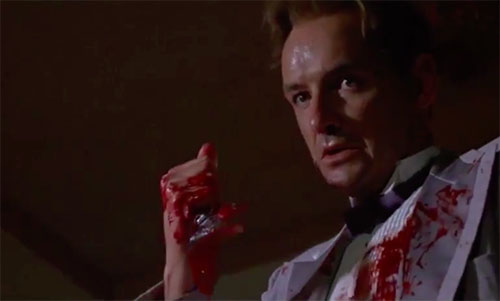
Of course, Jerry/Gene isn’t going to let anybody ruin his plans for suburban family bliss and engineers her out of the picture so he can hurry up and wed Carol. A violent climax at the aborted wedding ramps things up the camp-o-meter a fair way, but, as before, O’Quinn’s performance always teeters on the brink.
The infamous Weinsteins insisted on more gore for this follow-up, which O’Quinn flat out refused to participate in, which explains some of the insert-shots of various pools of blood etc, moving the property closer to a sort of Freddy-down-the-block slasher series, which probably explains why the leading man opted out of returning for any more rounds.
Either way, Meg Foster’s eyes are still the scariest thing in this film.
.

STEPFATHER III
 1992/18/106m
1992/18/106m
A.k.a. Stepfather 3: Father’s Day
Director: Guy Magar / Writers: GM & Marc B. Ray / Cast: Robert Wightman, Priscilla Barnes, Season Hubley, David Tom, John Ingle, Dennis Paladino, Stephen Mendel, Mario Roccozzo.
Body Count: 5
Laughter Lines: “Maybe he’s not who he says he is?” / “Yeah, well with any luck maybe he’s Kevin Costner or Tom Cruise?”
Terry O’Quinn’s (wise) decision to not return to the series, probably for fear of being typecast, means that this third and very final entry required the biggest convolution of all: Plastic surgery.
That’s right, fresh from escaping from the same institution again, Family Guy gets back-alley surgery from a greasy, chain-smoking dude who then gets his throat cut with a surgical saw for his trouble.
Nine months later, ‘Keith Grant’ is the new guy in the small town of Deerview, working at the plant nursery, volunteering to dress up as the Easter Bunny at a church fete, and hunting for a new mother-child combo to call his own. Although, Stepfather III smells like it’s trying to create some kind of mystery as to who it is who’s had surgery, but entirely fails to disguise it in any way.
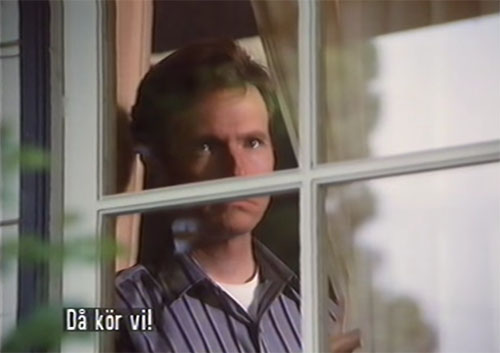
Said schmuckette is Christine (Barnes), amicably divorced and with wheelchair-bound son Andy, whose condition is psychosomatic (so we all know he’ll rise up outta that thing at the perfect moment). After three dates, Keith and Christine are married, but detective-mad Andy is suspicious of his new stepfather.
The perfect family illusion Keith has been desperate for begins to shatter when Andy goes to stay with his father for awhile, leading psychodad to begin courting another single mom, Jennifer, and hatching plans to get rid of Christine, but abandons them when Andy comes back earlier than planned.
Andy, meanwhile, becomes convinced Keith is Jerry Blake/Gene/whoever else, and recruits Father Brennan to help him prove it, but of course those who get in the way end up shoveled to death, raked, or driven off the road.
A woodchipper-tastic finale brings forth the moment when Andy finally lifts his feet from the wheelchair, accompanied by some rousing superhero music, and he’s forced to finish ‘dad’ off with some ferocity, ensuring there’s no amount of plastic surgery that can resurrect the Stepfather for Part 4.
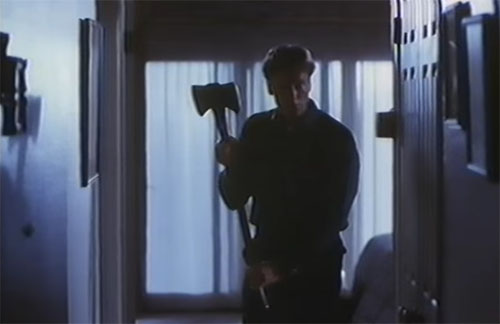
The video sequel needs to be trimmed along with Keith’s plants, clocking in about 15 minutes longer than necessary, but Wightman does fine in O’Quinn’s big shoes, though the script leans towards tacky elements here and there and Christine is the most naive of the Stepfather’s victims to date. In fact, all through the series women are made to look a bit dumb, eager to get married ASAP despite knowing fuck all about this man, and it’s down to the children to strike the final blow at the end. Hope they use those guilt coupons wisely going forward.
.
THE STEPFATHER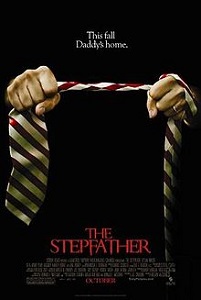
2009/15/101m 
“Daddy’s home.”
Director: Nelson McCormick / Writer: J.S. Cardone / Cast: Dylan Walsh, Sela Ward, Penn Badgley, Amber Heard, Sherry Stringfield, Paige Turco, Jon Tenney.
Body Count: 7
I saw this once ages ago and can’t remember much about it, beyond the fatal error of switching out the final girl to a final boy, a guy from a military background, no less – where’s the fear for our hero(ine) in that?
At the time it was just the latest in the factory line of people-remember-this-title-so-let’s-remake-it churn-outs, written by Cardone, who had also penned the risible Prom Night upchuck (directed by McCormick) and, back in ’81, The Slayer. O’Quinn was reportedly offered a cameo and sensibly said no. Sela Ward has an utterly thankless role as the new wife and Amber Heard spends most of the running time in a bikini, highlighting just how little thought went into this watered-down PG-13 retread.
No.
* * *
So, a quality series in terms of production values. O’Quinn was definitely the high point and the conservative/anti-conservative subtext of the whole thing is interesting even today, with all this “I like tradition,” rhetoric Steppie likes to spout.
As a slasher series, it’s definitely low-key, with far more emphasis on the character’s manipulative psychosis over a blade-wielding maniac chasing skimpy babes, which is refreshing in a way. Remember it next time you’re messaged on Tinder.
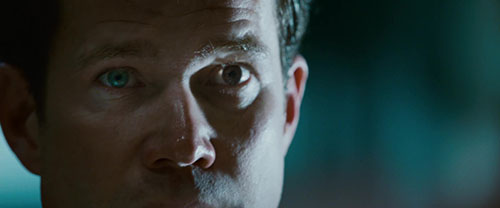
Blurbs-of-interest: Jill Schoelen was also in Cutting Class, The Phantom of the Opera, Popcorn, and When a Stranger Calls Back; Stephen Shellen was also in American Gothic; Stephen E. Miller was in Funeral Home and Matinee; Jeff Burr directed Texas Chainsaw Massacre III and Night of the Scarecrow; Caroline Williams had final girl duties in Texas Chainsaw Massacre 2 and was also in Hatchet III; Guy Magar later directed Children of the Corn: Revelation; Priscilla Barnes was in The Back Lot Murders; Season Hubley was in PrettyKill; David Tom was in Dead Scared; Stephen Mendel was in Jack Frost; Amber Heard was the title character in All the Boys Love Mandy Lane.
 2002/91m
2002/91m
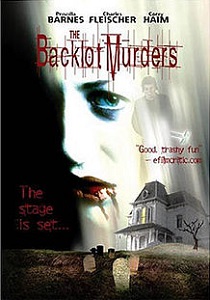
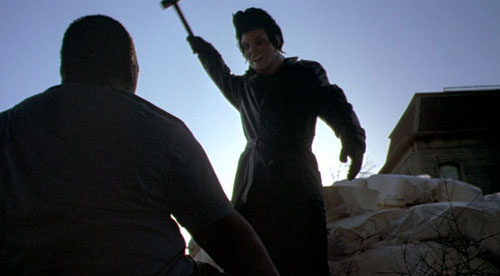
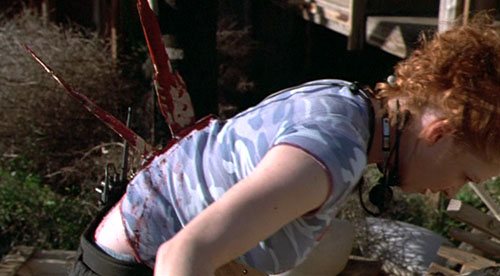

 2000/15/83m
2000/15/83m
 1987/18/85m
1987/18/85m



 1989/18/88m
1989/18/88m







